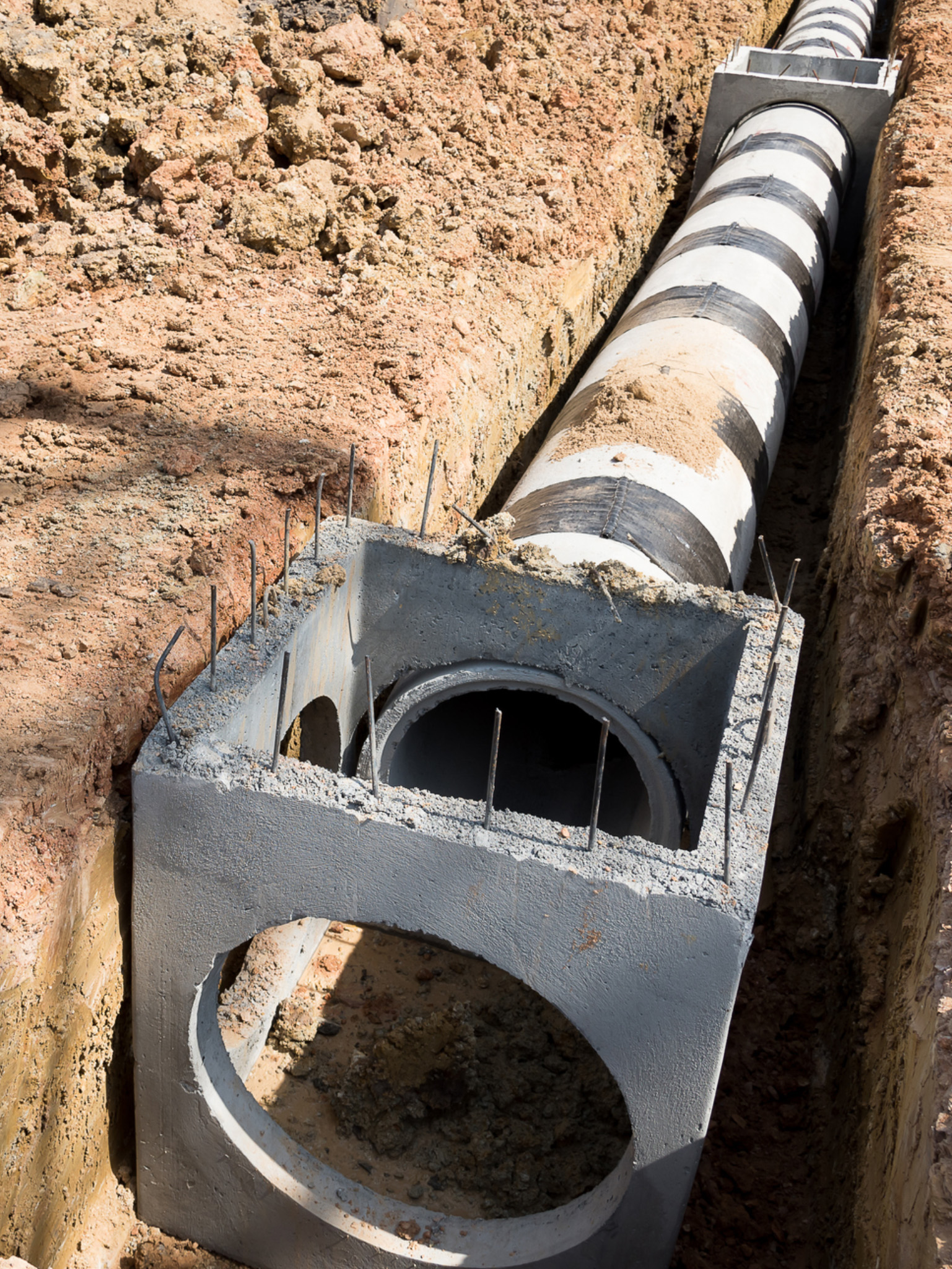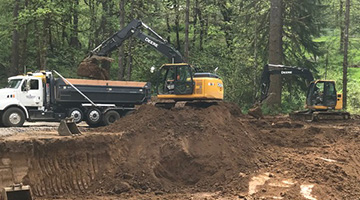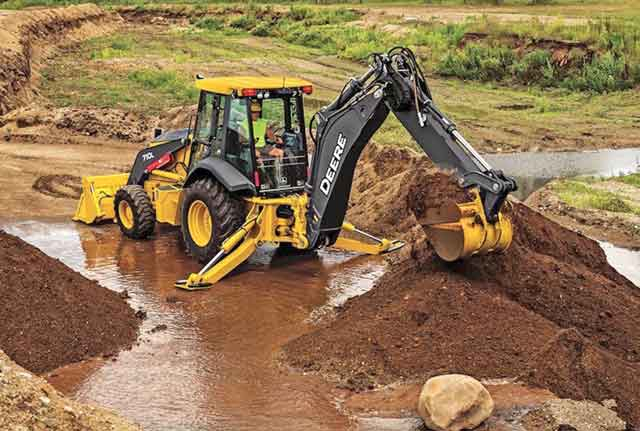Commercial Lancaster Trenching - Trenching Services for Companies in Lancaster
Commercial Lancaster Trenching - Trenching Services for Companies in Lancaster
Blog Article
Extensive Exploration: The Science Behind Superior Excavation Practices
The realm of excavation methods is a domain name where science intertwines with workmanship to uncover the secrets concealed under the earth's surface. From ancient hand tools to contemporary hydraulic excavators, the advancement of excavation strategies has actually been a testament to human ingenuity and technological improvements. Nonetheless, what truly sets exceptional excavation methods apart is a deep understanding of geological principles, combined with the use of sophisticated devices and methodologies. By checking out the science behind these practices, we can uncover the secrets that lie under our feet and value the accuracy and proficiency that go into every dig.
Development of Excavation Techniques
Throughout history, the advancement of excavation techniques has actually played an important role ahead of time building and construction methods and archaeological explorations. From the fundamental tools used by our forefathers to the advanced machinery utilized in modern times, the development of excavation techniques has actually substantially changed how we come close to different projects.
In old times, hand-operated labor with basic devices such as wheelbarrows, pickaxes, and shovels was the key method of excavation. This labor-intensive procedure limited the depth and range of excavations, usually leading to slow-moving progress and limited access to certain websites. However, as people progressed, so did the tools and methods used for excavation.
The Industrial Revolution marked a transforming point in excavation exercise with the intro of steam-powered machinery. This advancement reinvented the area, permitting faster and a lot more considerable excavations. In contemporary times, innovation plays a crucial role in excavation, with developments like general practitioner systems, drones, and 3D scanning boosting precision and efficiency in the field. The advancement of excavation strategies remains to shape the method we construct, explore, and comprehend the world around us.
Role of Modern Technology in Excavation

The integration of cutting-edge modern technology has basically transformed the area of excavation, boosting precision and performance to unmatched levels - septic ohio. One of the essential technical developments that has actually substantially impacted excavation methods is the utilization of General practitioner systems.
Furthermore, the development of 3D modeling and simulation software has structured the preparation process for excavation tasks. Drivers and designers can now visualize the whole excavation process before breaking ground, recognizing possible challenges and maximizing workflow. Combined with this, the execution of drones in excavation activities has assisted in airborne studies, volumetric measurements, and site assessments with unparalleled speed and precision.
Geological Concepts in Excavation
An understanding of geological concepts is vital for making sure the architectural honesty and security of excavation sites. Geological factors play a vital duty in establishing the feasibility and security of excavation jobs (septic ohio). One key geological principle to consider is the sort of soil or rock present at the site. Different soil types, such as clay, sand, or gravel, have varying levels of stability and require different excavation methods. As an example, cohesive soils like clay may require additional support to avoid collapses, while sandy dirts might be vulnerable to disintegration throughout excavation.
Moreover, the geological framework of the area, including faults, cracks, and rock developments, need to be thoroughly evaluated to identify possible threats and challenges. Digging deep into near fault lines or unstable rock developments can cause instability and potential hazards. By carrying out detailed geological surveys and evaluation, excavators and engineers can create strategies to mitigate risks and make sure the successful completion of excavation tasks. Eventually, including geological principles right into excavation methods is essential for achieving safe, reliable, and lasting results.

Newest Tools for Excavation
In the realm of excavation methods, contemporary developments in tools have actually reinvented the effectiveness and precision of excavation processes. One of the current devices making waves in the market is the usage of drones outfitted with innovative imaging modern technology. These drones can give thorough airborne studies of excavation websites, supplying real-time information on topography and prospective risks. This info aids in better planning and decision-making throughout the excavation procedure.
An additional cutting-edge device acquiring popularity is the implementation of 3D printing modern technology for producing custom excavation tools. This enables the manufacturing of specialized tools that are customized to the details needs of a task, boosting efficiency and reducing downtime.
Moreover, improvements in materials scientific research have caused the advancement of more powerful and a lot more durable excavation devices. septic ohio. Tungsten carbide-tipped excavator accessories, for example, offer premium performance in tough ground conditions, boosting efficiency on-site
Scientific research's Effect on Excavation Practices

Additionally, developments in materials scientific research have actually resulted in the creation of more powerful, a lot more resilient excavation devices and devices. As an example, making use of composite products in diggers and shovels has actually enhanced their efficiency and durability, ultimately raising efficiency on excavation sites. Furthermore, scientific research study on soil technicians and geotechnical engineering has actually offered valuable understandings into dirt behavior, permitting excavation experts to make educated decisions regarding excavation approaches and dirt stabilization methods. Overall, scientific research continues to drive innovation and enhancement in excavation practices, making excavation tasks much more reliable, economical, and sustainable.

Final Thought
To conclude, the development of excavation methods has been considerably affected by advancements in innovation and a deeper understanding of geological principles. The current devices and equipment utilized in excavation have enhanced effectiveness and precision in the area. The application of clinical understanding has significantly boosted excavation methods, resulting in more sustainable and reliable you could try these out techniques for excavating numerous kinds of materials.
In the world of excavation techniques, modern technologies in devices have actually reinvented the effectiveness and precision of excavation processes. By leveraging scientific concepts, the excavation sector has actually been able to substantially enhance effectiveness, accuracy, and safety in excavation processes. GPR allows excavation groups to non-invasively check and map subsurface structures, utilities, and possible threats, allowing them to prepare excavation jobs with higher precision and reduced threat of crashes.
In addition, clinical study on dirt mechanics and geotechnical engineering has actually supplied useful insights into dirt habits, enabling excavation professionals to make informed choices pertaining to excavation approaches and dirt stablizing methods. Generally, science continues to drive development and improvement in excavation practices, making excavation projects a lot more reliable, cost-efficient, and sustainable.
Report this page